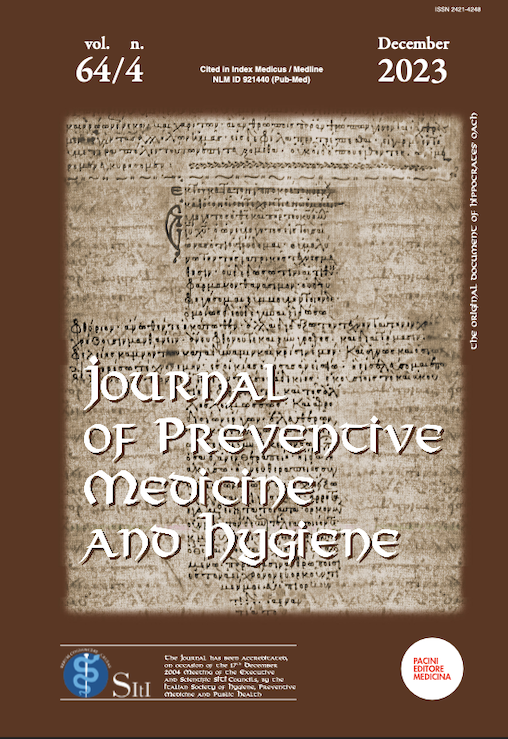Abstract
Background - Appropriate adherence to hand hygiene (HH) practices by health care workers (HCWs) reduces the transmission of pathogens and subsequently the incidence of hospital acquired infections (HAIs), in health care settings. Strict monitoring and auditing of this simple and cost-effective intervention is very important, as it significantly contributes in reducing the HAIs.
Material & Methods – A retrospective observational study, evaluating the HH audits from June 2021 till May 2023 in a tertiary health care facility in North India. HH audits were conducted in the ICUs and wards daily, by the trained infection control nurses (ICNs), using direct observation method based on World health organization (WHO) hand hygiene observational forms. HH total adherence (HHTAR), partial adherence (HHPAR) and complete adherence rate (HHCAR) were analyzed in Microsoft Excel sheet. HHTAR rates were compared among different profession, moments and the month wise trend was also observed over the period.
Results –A total of 24,740 HH opportunities were observed. The compliance rate for HHCAR, HHPAR and HHTAR were 20.3%, 41.5% and 61.4% respectively. Overall better compliance was reported from the ICUs, profession-specific compliance was highest among nurses (62.8%) and doctors (61.5%). Significant increase in adherence rate was appreciated post intervention 46.1% to 67.3%, (p value <0.01).
Conclusion – Continuous monitoring and reinforcement with timely feedback for intervention and regular auditing is a necessity to improve and maintain the appropriate HH practices among the HCWs. Low- and middle-income countries need to focus more on this simple and promising measure to combat the increasing HAI rates.
References
References
Tyagi U and Barwal KC. Ignac Semmelweis—Father of Hand Hygiene. Indian J Surg 2020;82(3):276–7. doi.org/10.1007/s12262-020-02386-6.
Mathur P. Hand hygiene: Back to the basics of infection control. Indian J Med Res 2011;134(5):611–20.doi: 10.4103/0971-5916.90985.
World Health Organization, WHO Patient Safety. WHO guidelines on hand hygiene in health care 2009. Available at: www.who.int/patientsafety/en. Accessed on 25/7/2023.
WHO launches first ever global report on infection prevention and control. Available at: https://www.who.int/news/item/06-05-2022-who-launches-first-ever-global-report-on-infection-prevention-and-control. Accessed on 21/11/22.
Krishnamoorthi S, Priyadarshi K, Rajshekar D, Sundaramurthy R, Dhandapani S, Madigubba H and Sastry AS. Impact of conducting hand hygiene audit in COVID-19 care locations of India—A large scale national multicentric study – HHAC study. Indian J. Med. Microbiol 2023; 43:39–48. doi.org/10.1016/j.ijmmb.2022.09.002.
Mvukiyehe JP, Tuyishime E, Ndindwanimana A, Rickard J, Manzi O, Madden GR, Durieux ME and Banguti PR. Improving hand hygiene measures in low-resourced intensive care units: experience at the Kigali University Teaching Hospital in Rwanda. Int J Infect Control 2021;17. doi:10.3396/ijic. v17.20585.
Dalen Rv, Gombert K, Bhattacharya S and Datta SS. Mind the mind: Results of a hand-hygiene research in a state-ofthe-art cancer hospital. Indian J Med Microbiol 2013; 31:280-2. doi: 10.4103/0255-0857.115639.
Abdo NMm and Al-Fadhli M. Improving hand hygiene compliance among healthcare workers in intensive care unit: an interventional study. Int J Community Med Public Health 2018;5(9):3747 – 52. doi.org/10.18203/2394-6040.ijcmph20183558.
Lenglet A, Van Deursen B, Viana R, Abubakar N, Hoare S, Murtala A, Okanlawon M, Osatogbe J, Emeh V, Gray N, Keller S, Masters P, Roolvink D, Davies J, Hickox K, Fotso A, Karla Bil K, Nwankwo C I, Ahmad B, Caluwaerts A, Lessard I, Dimeglio S, Malou N, Kanapathipillai R, McRae M,Wong S and Hopman J. Inclusion of Real-Time Hand Hygiene Observation and Feedback in a Multimodal Hand Hygiene Improvement Strategy in Low-Resource Settings. JAMA Netw Open 2019 14;2(8): e199118. doi: 10.1001/jamanetworkopen.2019.9118.
Lambe KA, Lydon S, Madden C, Vellinga A, Hehir A, Walsh M and O’Connor P. Hand Hygiene Compliance in the ICU: A Systematic Review. Crit Care Med 2019; 47:1251–1257. doi: 10.1097/CCM.0000000000003868.
Anguraj S, Ketan P, Sivaradjy M, Shanmugam L, Jamir I, Cherian A and Sastry AS. The effect of hand hygiene audit in COVID intensive care units in a tertiary care hospital in South India. Am. J. Infect. Control 2021;49(10):1247–51. doi.org/10.1016/j.ajic.2021.07.008.
Wang Y, Yang J, Qiao F, Feng B, Hu F, Xi Z ang, Wu W, Ni Z, Liu L and Yuan Y. Compared hand hygiene compliance among healthcare providers before and after the COVID-19 pandemic: A rapid review and meta-analysis. Am. J. Infect. Control 2022;50(5):563–71. doi.org/10.1016/j.ajic.2021.11.030.
Dhandapani S, Rajshekar D, Priyadarshi K, Krishnamoorthi S, Sundaramurthy R, Madigubba H, Sastry AS and Contributors of HHAC study group. Comparison of hand hygiene compliance among healthcare workers in Intensive care units and wards of COVID-19: A large scale multicentric study in India. Am. J. Infect. Control 2023;51(3):304–12. doi.org/10.1016/j.ajic.2022.09.028.
Clancy C, Delungahawatta T and Dunne CP. Hand-hygiene-related clinical trials reported between 2014 and 2020: a comprehensive systematic review. J. Infect. Control 2021; 111:6–26. doi.org/10.1016/j.jhin.2021.03.007.
Gould D, Purssell E, Jeanes A, Drey N, Chudleigh J, McKnight J. The problem with ‘My Five Moments for Hand Hygiene.’ BMJ Qual Saf. 2022 ;31(4):322–6. doi.org/10.1136/ bmjqs-2021-013680.
Lohiya SB, Rameshkumar R and Vagha J. Hand hygiene compliance and efficacy of a multimodal intervention strategy in improving hand hygiene compliance in a tertiary level pediatric intensive care unit. J Pediatr Assoc India 2019; 8:64-64. doi NA.
Ganesan V, Sundaramurthy R, Thiruvanamalai R, Raghavan M, Chavan SKD, Pusa R, Sakthivadivel V, Gaur A and Balan Y. Hand Hygiene Auditing: Is It a Roadway to Improve Adherence to Hand Hygiene Among Hospital Personnel? Cureus 14(5): e25221. doi: 10.7759/cureus.25221.


